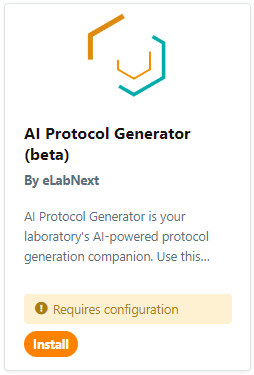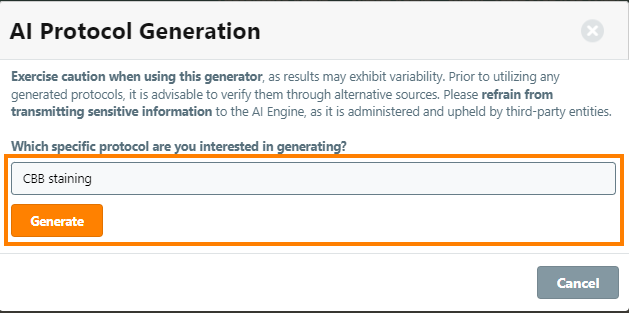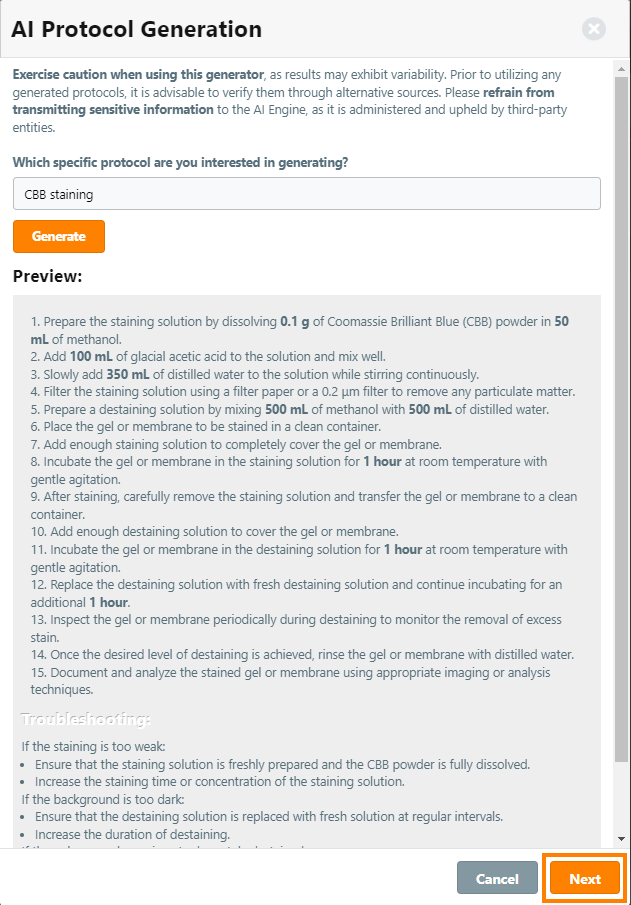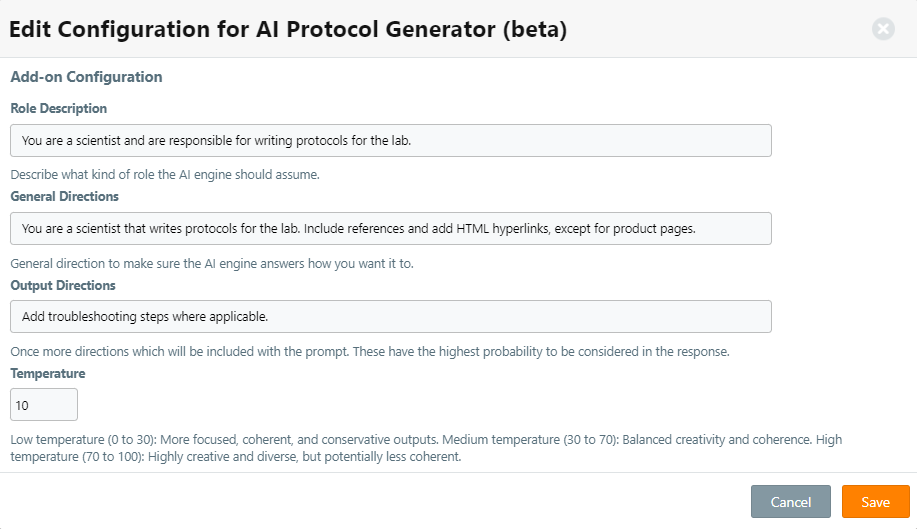AI Protocol Generator
The AI Protocol Generator turns short prompts into full-fledged SOPs within seconds, simultaneously simplifying and accelerating the writing process for your lab's SOPs.

Disclaimer: upon installation of this add-on, it is important to recognize the potential for bias in the AI-generated data, which could lead to inaccurate results. We strongly advise cross-referencing any outputs with your own trusted sources before incorporating them into your experiments. Additionally, refrain from submitting sensitive data to the AI engine, as it is owned and operated externally, beyond the scope of the eLabNext network. Your discretion and diligence are paramount in ensuring the reliability of the information generated.
To generate a new protocol navigate to the My Protocols page under the Protocols tab and click the AI Generate button.

In the pop-up window, enter a prompt describing the type of protocol you wish to create and click the Generate button.

A preview of the protocol is displayed in the window for review. Users can adjust the protocol prompt and click the Generate button to rewrite the protocol. To accept the preview and convert it into a draft protocol, click the Next button at the bottom of the window.

Configuring the add-on
Users can configure the AI Protocol Generator's prompts to tailor responses for to their lab's standards and subject matter. Note: the add-on is preconfigured with hardcoded instructions to ensure that the formatting complements eLabProtocol's existing structure and feature set.
The add-on observes the following configurable prompts:
- Role Description: role or perspective the AI engine assumes when writing the protocol
- General Directions: instructions on how the AI engine should answer the prompt
- Output Directions: additional instructions for the AI engine to consider, which will have the highest probability to be directly applied to the final response
- Temperature: determines the coherence and creativity used in writing the protocol
- Accepts a value from 0-100, with 0 producing the most coherent and conservative response while 100 generates a the most creative output
